How to make a dance dress
How to Start Making Dance Costumes - Beginner’s Guide to Dance Costume Making Part 1
by Mao on in DIY Belly Dance Costume Blog, Uncategorized • 1 Comment
Many years ago, I came up with this brilliant idea to make my own dance costume.
I already loved dance costumes and I was excited. 😀
The only problem was, I knew nothing about costume making.
I didn’t know what a dance bra top was made of, I didn’t know types of fabric, and of course, I didn’t know how to operate a sewing machine. I didn’t have one.
So naturally, I was very overwhelmed and frustrated.
Sound familiar?
When you’re just starting to make your own dance costumes, it can be very confusing and overwhelming. 🙁
So in this video and next one, I want to help very beginners get started. In this post, you’ll see what tools you need and easy projects to try. Let’s get started!
Sign up for Sparkly Belly newsletter so you won’t miss Part 2!
My site is specialized in belly dance costume making, but you can apply basics to other style of dancing as well.
Now, if you’re new to sewing, you’d want to avoid it as much as possible. So the common question a beginner costume maker asks is…
Can I make a dance costume with hot glue gun?
Unfortunately, the answer is no. I don’t recommend hot glue gun for a few reasons.
First, the glue can melt or get weak with your body heat as you dance in the costume. What happens if the glue melts? Your costume will fall apart. Not a good idea. 🙁
Second, the heat of the glue can ruin your fabric.
And third, we use a lot of stretch fabric for costume making, and your hot glue may not stretch. The seams may come apart as you put it on.
Of course, hot glue can be great for making halloween costumes. But a dance costume needs more strength and durability, so in general, I don’t recommend hot glue.
Do I have to sew then?
So for most part, sewing is better than gluing. But there are exceptions.
For example, for decorating your costume with small rhinestones, gluing works just fine.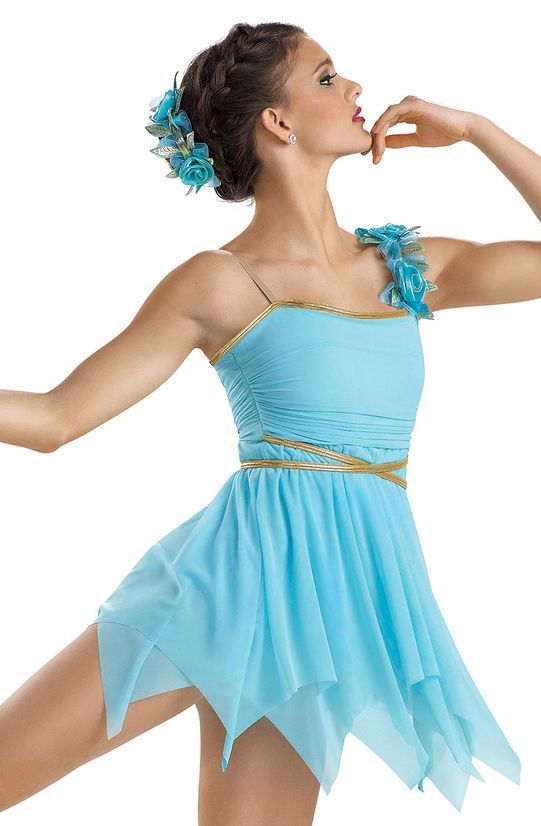 Be sure to use appropriate glue like gem tac. (There’s a great tool for gluing rhinestones!)
Be sure to use appropriate glue like gem tac. (There’s a great tool for gluing rhinestones!)
There’s also fabric glue available. If you really don’t want to sew, you can try fabric glue. But based on my experience, fabric glue is never as strong as hand stitching, and again, it doesn’t hold stretch fabric well, even stretchable fabric glues I’ve used.
So instead of wasting your money on fabric glue, I recommend you learn how to use a hand sewing needle and thread 🙂
What do I need to start making costumes?
For beginners, all you need to start making costumes is:
- Hand sewing needle
- Scissors
- Measuring Tape / Ruler
You probably have these things at home. And just pick up inexpensive fabric and thread to get started.
You can upgrade tools as you go of course 🙂 But for now, I’ll share with you projects you can work on with the above tools in a minute.
Do I need a sewing machine?
Not for beginners.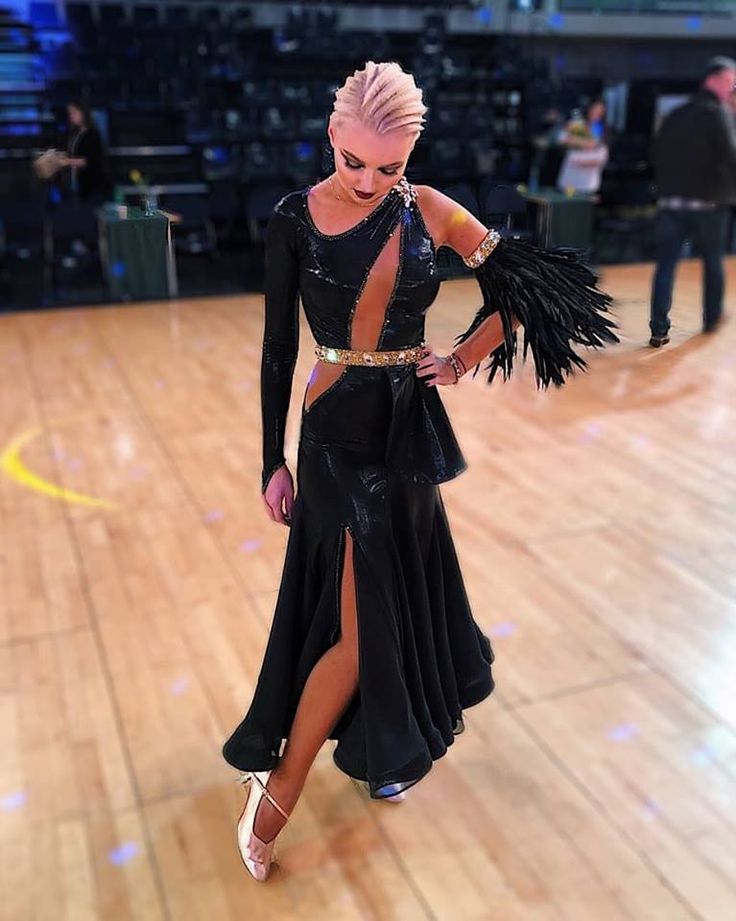 It’s definitely nice to have a sewing machine if you want to make a skirt.
It’s definitely nice to have a sewing machine if you want to make a skirt.
But if you’re just starting out, build your skills and confidence by first tackling easy projects like ones I’ll share with you next.
Where can I learn how to start making dance costumes?
I have over 100 dance costume tutorials on my blog, which you can find summarized here 🙂
But if you’re new – first try no-sew projects like this overskirt or crop top.
These projects don’t require much sewing, and even where sewing is required, it’s just a few stitches. You can even use safety pins for the time being. The important thing is, you get used to measuring and cutting fabric.
Then you can move onto making fun accessories like this armband and foot accessory.
And try decorating costumes by using this ruching or pleating technique, or beading.
Without sewing machine, you can make beautiful things like this Swirly Belt.
You can find the catalogue of all my tutorials like these here 🙂
Now the next big confusion is, how do I pick the right fabric for making dance costumes? In my post, I’ll show you common types of fabric used for dance costumes and how to pick them.
So make sure to sign up for my newsletter from the below link, so you won’t miss the next video!
Sign up for Sparkly Belly newsletter so you won’t miss Part 2!
And if you know a dancer who is struggling with costuming, help them out by sharing this post with them. They will appreciate that your love 🙂
Thanks for reading, and keep sparkling! 🙂
P.S. Pin this image for future reference! 🙂
Like what you read? Want to make more costuming bits yourself?
Sign up for my newsletter here and get my free email course, Belly Dance Costume Making 101!
DIY Dance Outfits You’ll Love to Move In!
Dancers are passionate about what they do, but they also know how expensive it can be. Keeping up with the cost of both training and equipment isn’t always easy. As usual, however, your DIY skills can help you out and make things a little cheaper! Mastering some basic sewing skills, for example, is already a plus as a dancer when it comes to things like putting ribbons on your ballet shoes.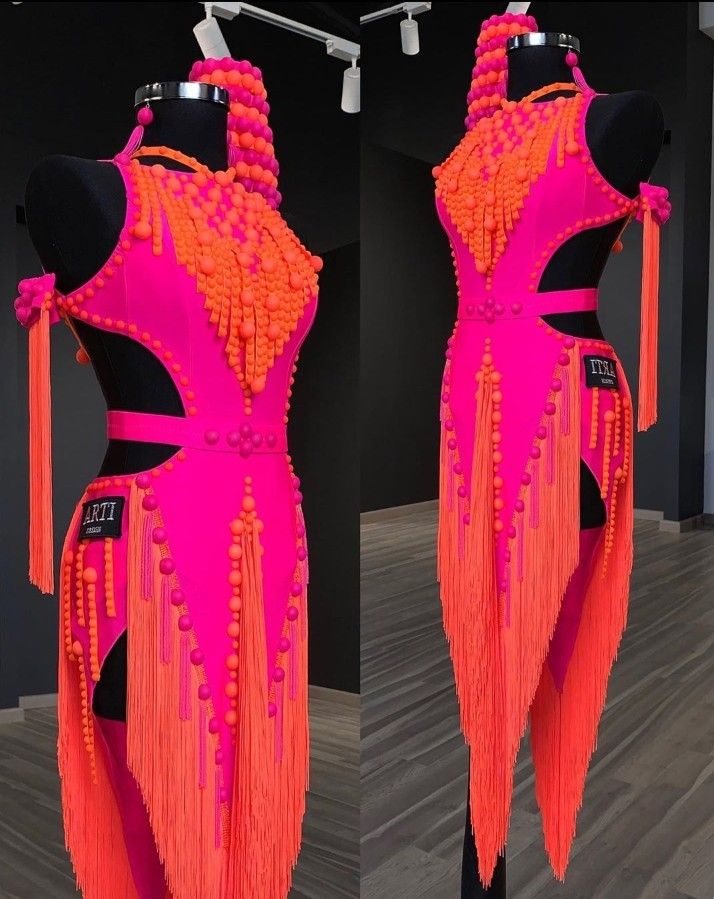
If you’re ready to try taking your sewing skills to the next level, try making yourself one of these new DIY dance garments instead of buying a brand name one! You’ll save money, perfect your technique, and get a new skirt, leotard, or sweater to rock at your next rehearsal.
1. Flowy no-sew dance skirt
VIEW IN GALLERY
Ballet Scoop provides you with an easy pattern that actually doesn’t involve any sewing at all! As long as you’re careful with your measurements and make sure to cut your lines neatly, your skirt will turn out just how you want it to!
2. Fabric tube top
VIEW IN GALLERY
If you’re looking for a quick fix for a last minute performance but all you have to go with your favourite dance skirt is a simple tube top, there are plenty of ways to customize it quickly! Sewing and rhinestoning take a long time, however, so BDancewear suggests adding strips of fabric in a few different, stylish ways.
3. Simple spaghetti strap leotard
VIEW IN GALLERY
Are you looking for something a little more exciting than the traditional black leotard? You can find bodysuits with fun colours and patterns in stores, but they’re often more expensive.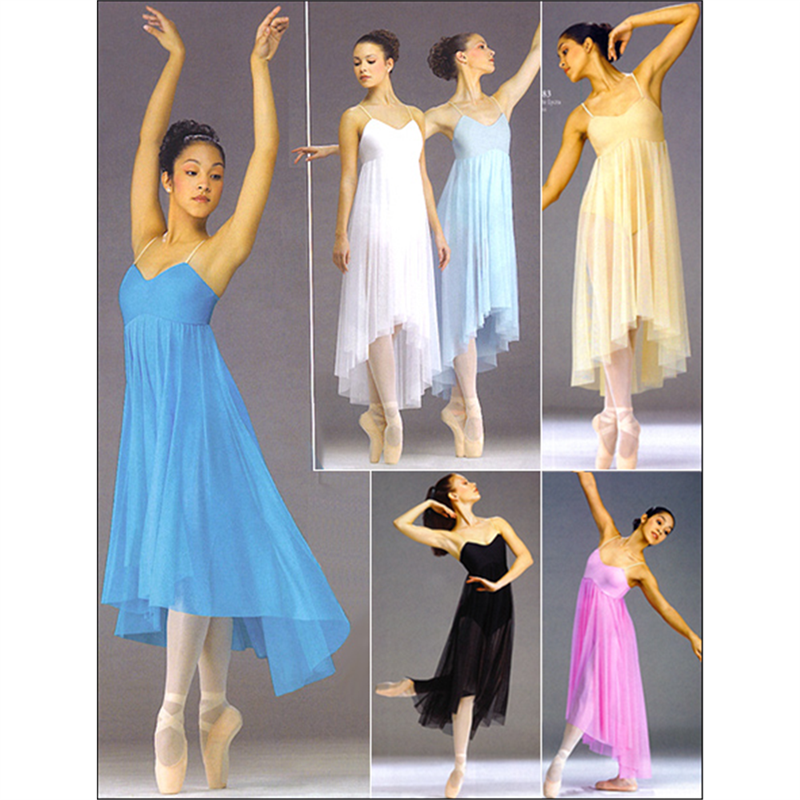 The Kool Chicken teaches you how to make one of your own from any stretch fabric you like instead!
The Kool Chicken teaches you how to make one of your own from any stretch fabric you like instead!
4. Criss-crossing strap leotard
VIEW IN GALLERY
Do you like the idea of making your own unique bodysuit with a bit of a flair but prefer to keep it black so it’s still traditional for class? Try getting creative with your straps instead! Loran’s World shows you how to do it in 61 minutes.
5. DIY chiffon wrap skirt
VIEW IN GALLERY
Do you like the idea of making yourself a cute little dance skirt, but you’d rather be able to tie it on and off rather than having to pull it down and step out of it? Dance.net has the pattern for you! This adorable chiffon skirt is a wrap style and slightly sheer, giving it an extra feminine touch.
6. Braided racer back dance bralet
VIEW IN GALLERY
Pretty Quirky Pants shows you how to make an adorable crop top out of neoprene. Besides being adorable, this top will stretch and breathe with you as you dance, but the material does take some specific sewing techniques.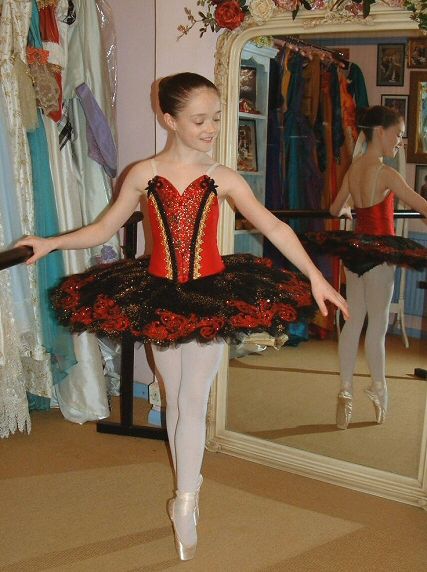
7. Classic tutu DIY
VIEW IN GALLERY
Gros Grain Fab walks you through the process of creating your own classic ballet tutu, just like you might see on stage in a professional production! You might not need a tutu like this in regular rehearsal, and you might prefer a professionally made one for shows, but a DIY classic tutu makes for great dress rehearsal practice wear.
8. Lace ballet skirt with raw edges
VIEW IN GALLERY
If you like the idea of a rehearsal skirt but you’re looking for something longer and more whimsical, this raw edged lace skirt might be exactly what you’re looking for! Love Maegan shows you how it’s done.
9. Twirly dance skirt
VIEW IN GALLERY
Perhaps it’s your child who needs dance clothing and not you? This pattern could be adapted for anyone of any size, but the way it twirls is particularly fun for little girls who are learning how to twirl! Find out how it’s made on Hazel and Company!
10. DIY dance shrug
VIEW IN GALLERY
Do you need something to do your warm ups in before you’ve worked up a sweat, but that’s still close cropped to your body? Many dancers prefer not to wear baggy clothing, so big sweaters are out! Instead, try this adorable dance shrug by Sparkly Belly using the sleeves of a regular shirt as a guide.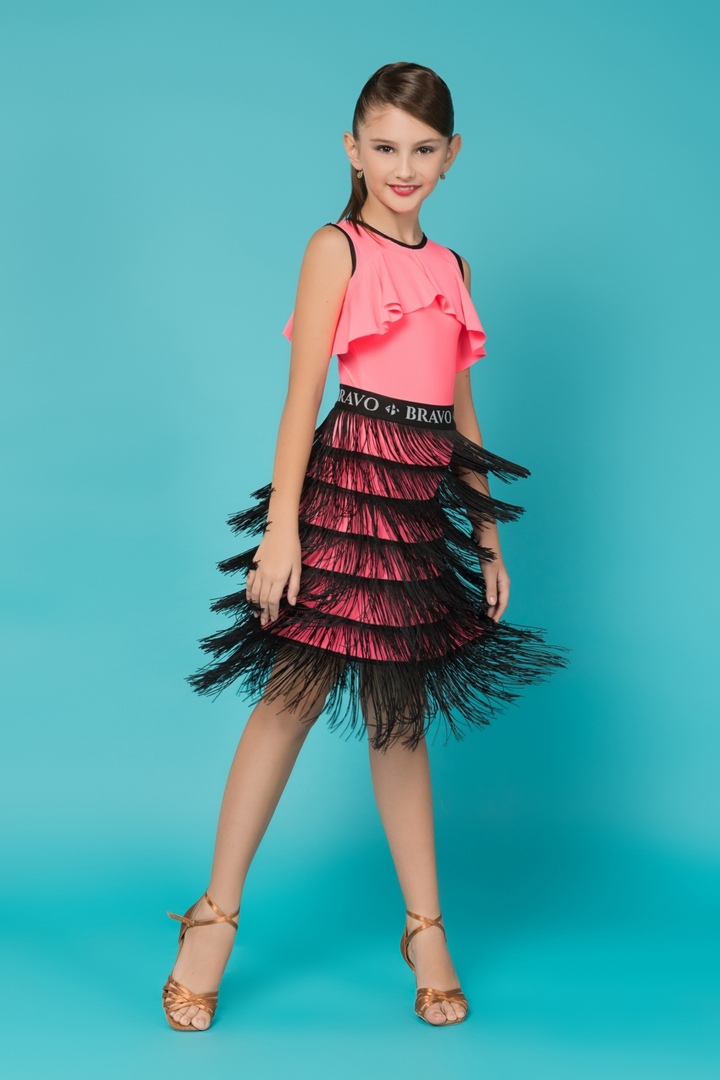
11. Crochet ballet wrap sweater
VIEW IN GALLERY
Are you an avid crochet enthusiast with a ballerina daughter? Then you have the perfect opportunity to make an adorable wrap sweater that will keep her comfortable while she warms up in class! Check out this simple pattern from Red Heart.
12. Knitted ballet bolero
VIEW IN GALLERY
Knitters rejoice, there are plenty of ballet-related dance wear patterns out there for you too! This adorable little bolero jacket for kids is a great way to keep your little dancer warm before and after class and it’ll look adorable with their tights and bun. Get the pattern from Love Knitting.
13. Intricate knitted leg warmers
VIEW IN GALLERY
Speaking of knitting, Knitarelli Patterns is here to help you make your own dance garments as well! We love this intricate little leg warmers that will keep your hardworking calf muscles warm between rehearsals. They look fancy, but they’re not actually all that difficult to make!
14.
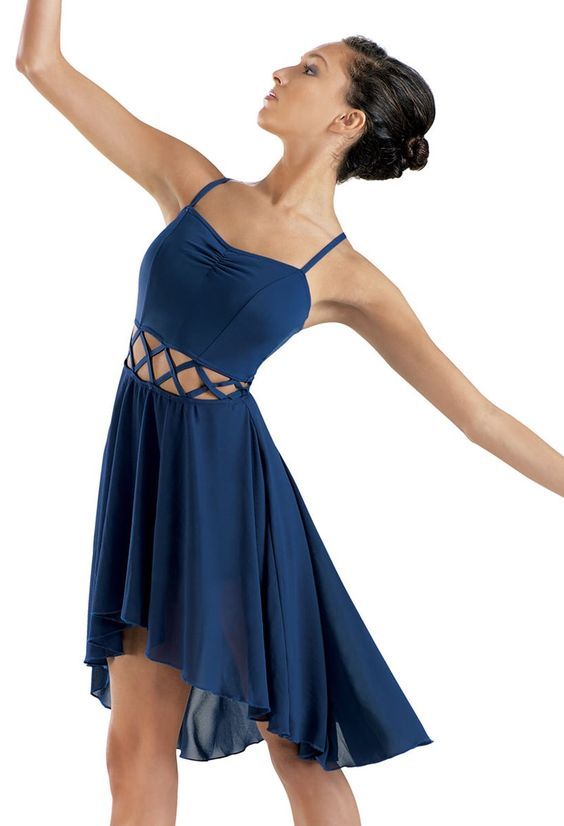 Layered knitted “tutu”
Layered knitted “tutu”VIEW IN GALLERY
Okay, so the idea of a knitted tutu with several layers might not be the most practical for experienced or professional dancers who warm up quickly and need to see the lines of their bodies while they move, but it’s certainly adorable for tiny dancers! Get the pattern from Monika Sirna.
Time to put on your dancing shoes!
How to sew a ball gown for dancing, recommendations and rules.
How to sew a ballroom dress for dancing? The question is rather difficult. Dance is flight. If the dancer feels and listens to himself, his body and thoughts, then his performance will enchant and delight even the most strict judges. Nothing should distract the performer from the dance, so a comfortable outfit that does not restrict movement is half the battle.
The dance costume has very important tailoring features. Creating a perfect ball gown in every detail is much more difficult than sewing an outfit for every day.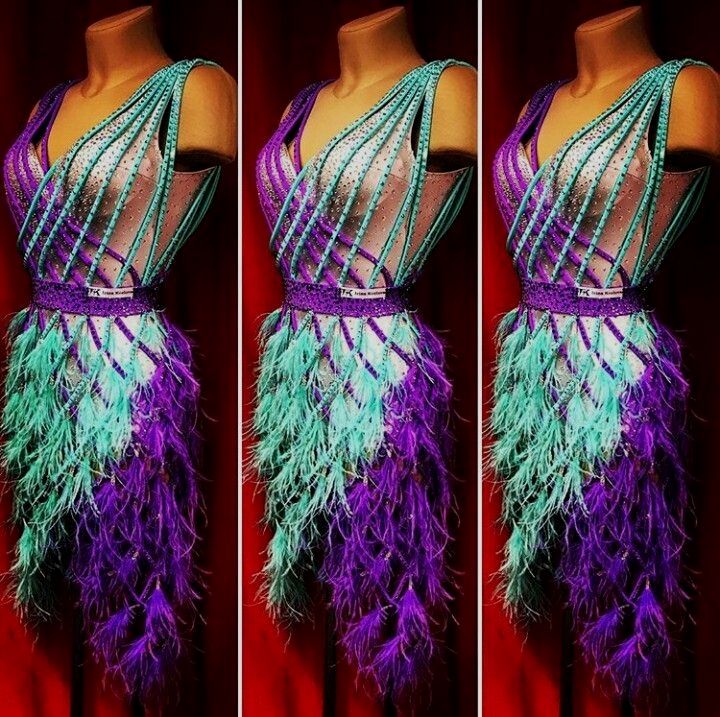 About how to sew a dress for dancing, "SportKot" will tell you - your guide in the world of sports beauty.
About how to sew a dress for dancing, "SportKot" will tell you - your guide in the world of sports beauty.
So, let's start with the main rules for ballroom dance dresses. The movements of the dancer require high elasticity from the costume, so the choice of fabric is extremely important. For sewing the base of a ball gown, fabrics such as lycra, stretch guipure, and supplex are often used. What is a base? This is a special swimsuit that covers the chest and back and also serves as underwear. The swimsuit should fit as close as possible to the body, emphasizing the feminine shape of the partner and not allowing the dress to peel off to the waist level. As for the color of the swimsuit, the rules allow the use of any other than nude. Also, it is forbidden to use guipure and other transparent fabrics for sewing the base.
Dresses for Latina are short, moderately open outfits with various trims on the chest and skirt: feathers, flounces, glass beads, rhinestones, fringe. Here you can show your imagination and express your bright, extraordinary style. But do not get too carried away with decorative elements, so as not to weigh down the image. Latina is, first of all, emotions, and a beautiful outfit should only visually enhance movements, and not distract the attention of spectators and judges.
But do not get too carried away with decorative elements, so as not to weigh down the image. Latina is, first of all, emotions, and a beautiful outfit should only visually enhance movements, and not distract the attention of spectators and judges.
Standard dresses are "full length" dresses. They have a fitted style, and thanks to the multi-layered skirts made of light fabric, it creates the feeling that the dancer is floating through the air, and not stepping on the parquet. When sewing dresses for the standard, it is possible to use fabrics of any color, with the exception of shiny materials and shiny finishes.
To sew a truly luxurious ball gown, it is important to think through all the nuances, from style to the smallest decorations. But most importantly, it's still convenience. Consider the main rules for sewing dresses for ballroom dancing:
- ⦁ Despite the fact that a pattern is used when creating a dance dress, you need to adjust the outfit on the body.
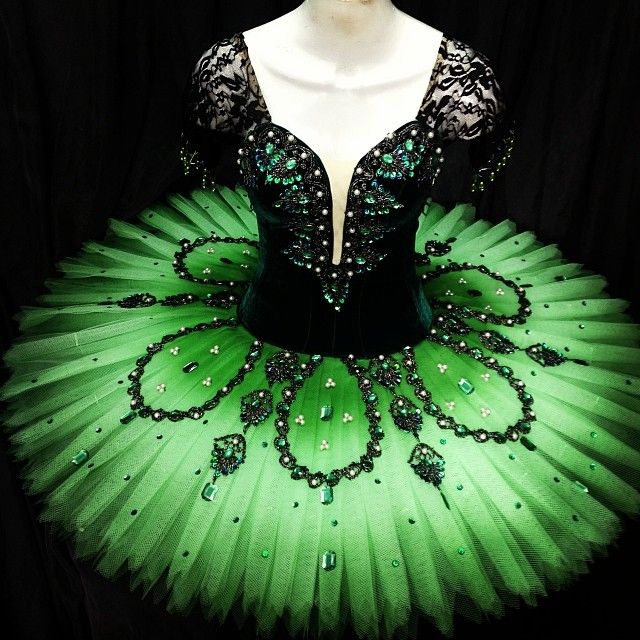 This is the only way to achieve the best result. If there are cutouts on the skirt, it is also better to do them when trying on, in order to immediately understand how they will look.
This is the only way to achieve the best result. If there are cutouts on the skirt, it is also better to do them when trying on, in order to immediately understand how they will look. - ⦁ All sections of the suit are processed with an elastic band, as on a swimsuit. This is done so that the dress does not fly off and does not ride up. The seams are ground on a knitting machine, and the skirt and other elements are sewn in a zigzag.
- ⦁ During the performance, the dancer does not have to worry about her outfit falling off. Therefore, all parts must be securely fastened. If the dress has deep cutouts, they are fixed with jumpers. Shoulder straps, straps and sleeves are sheathed with rubber bands.
Having decided on the style and choosing the fabric for the dance dress, you need to choose a pattern. Of course, it is better if the pattern is made by an experienced craftsman especially for you. After all, this is the only way you can get an exclusive thing that will allow you to really shine during the performance. When the pattern is ready, the suit begins to be sewn from the bodice and skirt. Decorative trim and decorations are sewn only after the ballroom dance dress is completely ready.
When the pattern is ready, the suit begins to be sewn from the bodice and skirt. Decorative trim and decorations are sewn only after the ballroom dance dress is completely ready.
Sew a dress for ballroom dancing
- What should be considered?
- What fabrics to use?
- Parts of the dress
- How to cut a dress?
- Where did the allowances go?
- What else do you need?
- Features of cut
- Dress and underwear
- What to buy for finishing?
- Your first dress
- Skirt
- What to do next?
- Footage
Luxurious hall, beautiful music, elegant costumes - in a word, a ball. And is it really so important whether ballroom dancing competitions are held here or a group of enthusiasts decided to recreate the atmosphere of a certain time: in either case, one cannot do without suitable clothes. Can I make my own dress for ballroom and latin dances? This type of needlework has its own specifics, which we will discuss in the article.
back to contents ↑
What should be taken into account?
While dancing, a person is constantly on the move. And at the same time, he should not think whether the suit fits him well, whether something will fall off at the most inopportune moment, whether a part of the body that should not be exposed under any circumstances will be exposed. That is, the first rule to follow is that the suit in any situation must remain correct.
Reenactors in this sense live a little easier - they simply copy the sewing techniques adopted in a particular era, and everything turns out by itself. It’s a different matter if your goal is to sew a dress for ballroom dancing yourself. Consider what the dancer will have to do:
- slopes;
- deflections;
- jumping;
- turns.
The clothes must not slip. From this follow the basic requirements for a ballroom dance dress:
- it must be not only beautiful, but also elastic;
- it is necessary that the outfit fits as close as possible to the body - this is not only convenient, but also emphasizes the femininity of the partner.

back to the table of contents ↑
What fabrics should I use?
Sewing a dress for a girl will not take much time if you sew it according to the rules and know the sewing cut standard. The material from which you are going to sew a ballroom dance dress should stretch well. Therefore, in the manufacture of such dresses are widely used:
- supplex;
- lycra;
- stretch mesh;
- stretch guipure.
Supplex
Supplex you have seen many times - it is from it that swimsuits are sewn for athletes, and for lovers of swimming or gymnastics. It stretches perfectly, perfectly fits the body, does not restrict movement, and besides, it can look very impressive - the assortment in stores is wide enough to satisfy even the most capricious customer.
Lycra
Lycra is also distinguished by excellent qualities - this material has been known for more than fifty years, it is especially loved by athletes, and those involved in a variety of sports. It is elastic, durable, in lycra clothes it is neither cold nor hot, but it costs about the same as supplex.
It is elastic, durable, in lycra clothes it is neither cold nor hot, but it costs about the same as supplex.
Stretch
Stretch, in particular, mesh and guipure, is also very popular when sewing rating dresses for ballroom dancing. It stretches well, but at the same time it keeps its shape perfectly, looks good, both internal linings on clothes and decorative elements are made from it. On sale you will find different types of stretch mesh - with a large and small cell, thin and dense, so there is always the opportunity to pick up something suitable. Stretch guipure is used mainly for external details - frills, sleeve edging, decorative elements on the face and skirt.
Important! For some elements, the most common fabrics, mainly silk, are suitable.
back to contents ↑
Parts of the dress
DIY ballroom dance dress consists of two main parts:
- bodysuit;
- skirts.

Why is bodysuit used and not just bodice? Everything is extremely simple. The fact is that the rules of various dance unions, including sports ones, strictly stipulate the requirements for a costume. In particular, flesh-colored or transparent briefs are banned in many countries. If the partner raises the partner high or she, say, does some acrobatic elements, it should not seem to those present that there are no panties on her at all. The body suits the rules much better.
Important! Sleeves on ball gowns are optional, as well as collars, and such trifles as pockets are completely contraindicated.
back to contents ↑
How to cut a dress?
The job of a ball gown maker is very different from that of a regular tailor. It seems that all the rules are violated:
- ball gowns are most often sewn without a pattern;
- allowances are not left;
- a thing so necessary for an ordinary tailor, like an iron, is often not available at all.
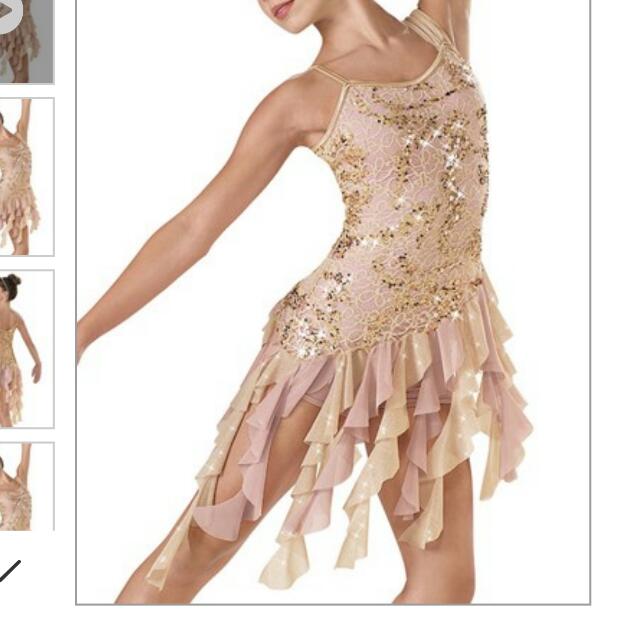
So why doesn't someone who wants to sew a ballroom dance dress with their own hands need an exact pattern? Because the outfit will still have to be customized right on the model. And it is very important how this dress should behave - flow or stretch. In addition, it is also more convenient to make cutouts on the one who will wear these clothes - you can immediately cut everything exactly and not return to this issue anymore.
back to contents ↑
Where did the allowances go?
All the fabrics used to make modern ball gowns have excellent stretch. If they are made with allowances, they will not fit the body well and will soon begin to sag in the most unexpected places. Therefore, they are cut strictly in size, and from some materials (for example, stretch) - by reducing the measurements.
back to contents ↑
What else do you need?
Before you sit down to work, take care of your sewing supplies.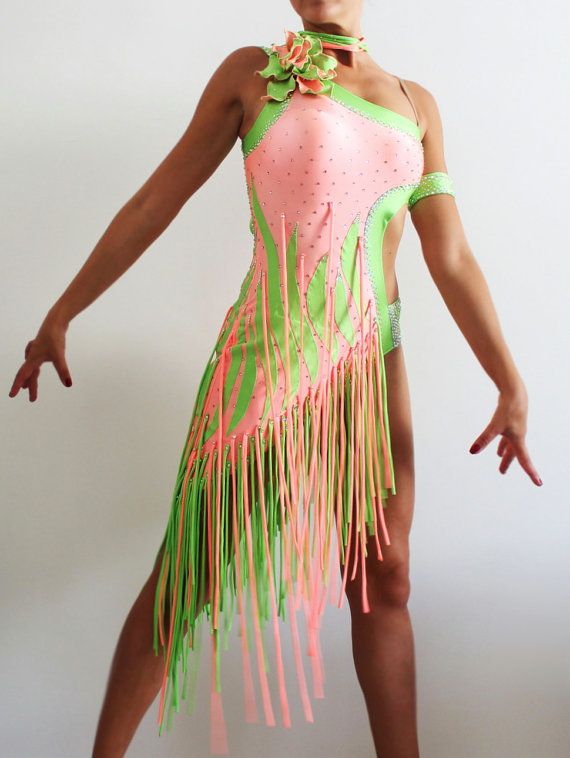 Nothing special is needed, but some tools that you can do without when sewing a chintz dress or a draped coat are simply necessary in our case. You will need:
Nothing special is needed, but some tools that you can do without when sewing a chintz dress or a draped coat are simply necessary in our case. You will need:
- well-sharpened scissors;
- aquamarker;
- zigzag machine;
- knitting needle;
- rubber band;
- overlock;
- synthetic threads.
Scissors are supposed to be sharp, but in this case it is especially true. Fabrics like supplex and stretch cannot be cut with a blunt tool. As for the blanks, the patterns, when they are, are more convenient to transfer with an aqua marker - on such fabrics it draws much better than chalk or soap, and it is washed off without any difficulty.
The question may arise - why do you need a zigzag and an overlock at the same time? When sewing ordinary clothes, you can be satisfied with one thing, in this case it will not work. The seams are processed with an overlock (or rather, an elastic band is sewn with an overlock, like on a swimsuit), and the skirt and decorative elements are zigzag.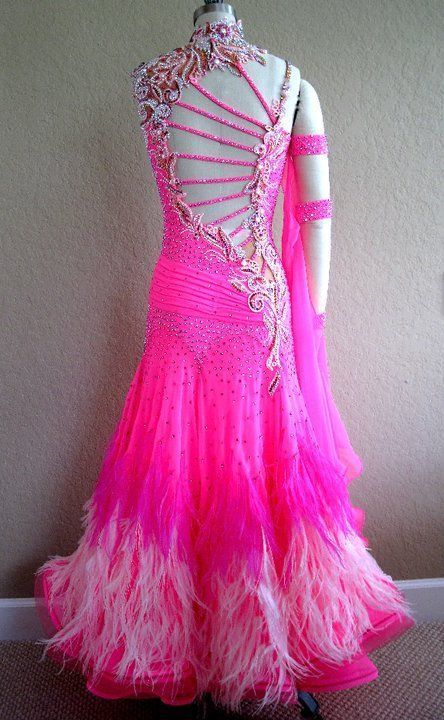 Why is that? Because a dance dress is an outfit in order to move in it. And the seams must be very strong. Accordingly, there are also requirements for threads, for example, it is better to sew synthetics with lavsan. All sections are sheathed with elastic thread - this is also done so that the seam is strong and the suit does not slip.
Why is that? Because a dance dress is an outfit in order to move in it. And the seams must be very strong. Accordingly, there are also requirements for threads, for example, it is better to sew synthetics with lavsan. All sections are sheathed with elastic thread - this is also done so that the seam is strong and the suit does not slip.
Important! All details, including decorative ones, are ground only on a typewriter.
back to contents ↑
Features of the cut
The ballroom dance dress looks light and airy - here you have a deep neckline, and fluttering skirts, and sleeves with frills. But at the same time, look - good dancers never fall down. Why? Because the dress has a lot of additional details that serve precisely to ensure that it does not slip during the performance:
- eyelets;
- webbing;
- jumpers.
Eyelets are sewn onto the sleeves. When the dancer puts on the outfit, a finger is inserted into the loop.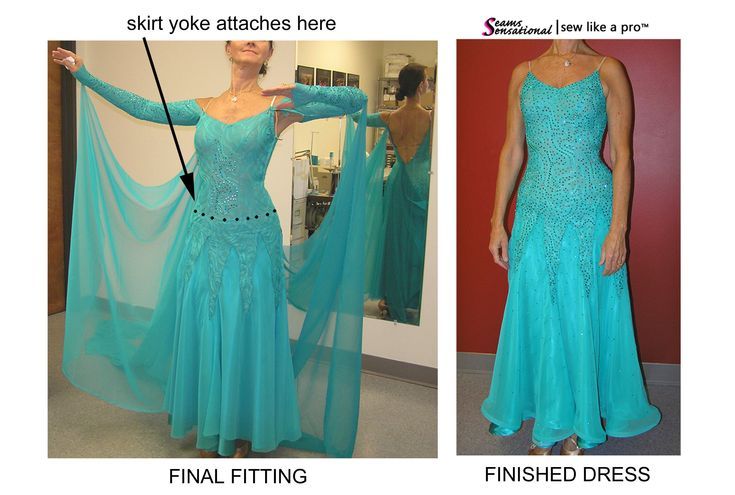 They are invisible, but they must be strong enough. The same applies to straps and straps - very strong and reliable, but at the same time, completely invisible, because they are made of skin-colored material and sheathed with elastic. Jumpers strengthen the cutout if it is large.
They are invisible, but they must be strong enough. The same applies to straps and straps - very strong and reliable, but at the same time, completely invisible, because they are made of skin-colored material and sheathed with elastic. Jumpers strengthen the cutout if it is large.
back to contents ↑
Dress and underwear
A dance costume, like any sports outfit, should be as functional as possible. That is, a person should not have any extra objects that hinder movement. At the same time, all the lines of the figure are visible, nothing sags and no parts of the body bounce to the beat of the music. And for those who just want to do ballroom dancing, the question immediately arises - what about underwear? Wear it or not? The style of the bodice also depends on this.
So. Linen is not worn under the ball gown. But at the same time, the outfit should emphasize the dignity of the figure, that is, nothing should hang anywhere.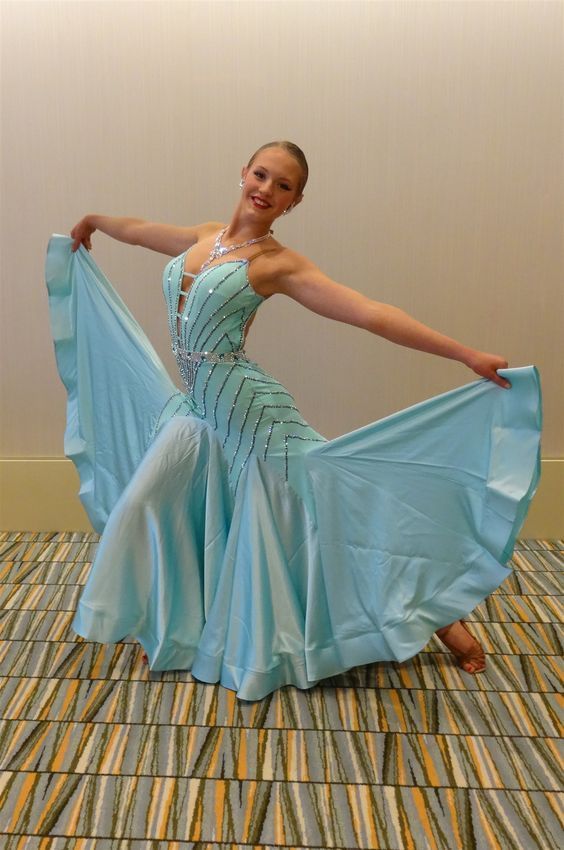 How to be? In fact - to sew a bra to the dress. If the lady has small breasts, you can limit yourself to cups. But the requirements are the same as for all other elements of dancewear:
How to be? In fact - to sew a bra to the dress. If the lady has small breasts, you can limit yourself to cups. But the requirements are the same as for all other elements of dancewear:
- The bra or its replacement must not fall off, that is, it must be sewn very firmly - in fact, tightly.
- It should fit perfectly.
- It should not have any unnecessary details.
- The bra must be the same color as the dress - or nude.
There is no need to transfer expensive underwear to such a thing. It is best to buy a cheap, but appropriately sized bra. You can also buy cups separately - in the department that sells goods for dancers and athletes, or via the Internet.
Important! Is push up suitable? It depends on two things - on the size of your breasts and on how much you are used to increasing their size in this way. If you have never used such things, you should not use them in a dress for a performance. Details that may cause you discomfort should be avoided.
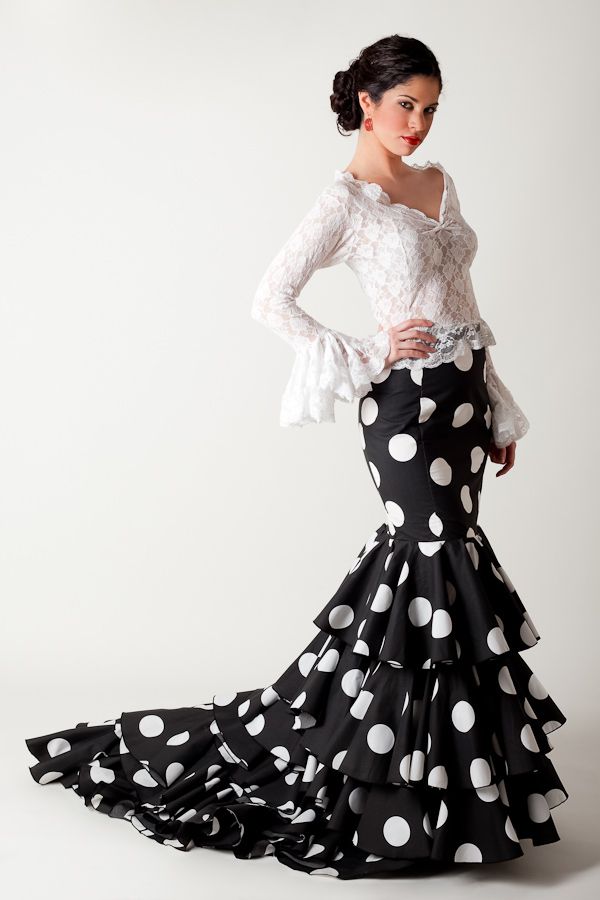
back to contents ↑
What to buy for decoration?
An ideal way to decorate a suit is with embroidery or sewn appliqué. The main advantage of these types of decor is that they will definitely not let you down. But in principle, other elements can be used:
- glitter;
- sequins;
- rhinestones.
It is important that all small parts are firmly fixed.
Important! For some dances, other decorations are also used - there may be capes, boas and other accessories. It all depends on the image you intend to create.
back to contents ↑
Your first dress
Your first ball gown is best made from a ready-made leotard. Why is it more convenient to do so? For several reasons:
- Sections already processed.
- No need to cut difficult-to-process material.
- Has all the details, including the cups, which are already sewn in.

Important! Swimwear must fit perfectly.
back to contents ↑
Skirt
What can a skirt be made of? Since this part of the outfit should not fit the body perfectly, it can be sewn from any light material:
- silk;
- polyester;
- chiffon;
- tulle.
Tulle is most suitable for the first piece, because it:
- comes in different colors;
- is cut in different directions;
- has a large width;
- keeps its shape perfectly;
- does not crumble, so the edges can not be processed at all;
Important! Such a layered skirt will cost much less than if you sew it from silk.
Tailoring the skirt
The skirt can be made of several layers. It can be made as a sun or half sun. Since several layers are assumed, it is better to draw a pattern on paper.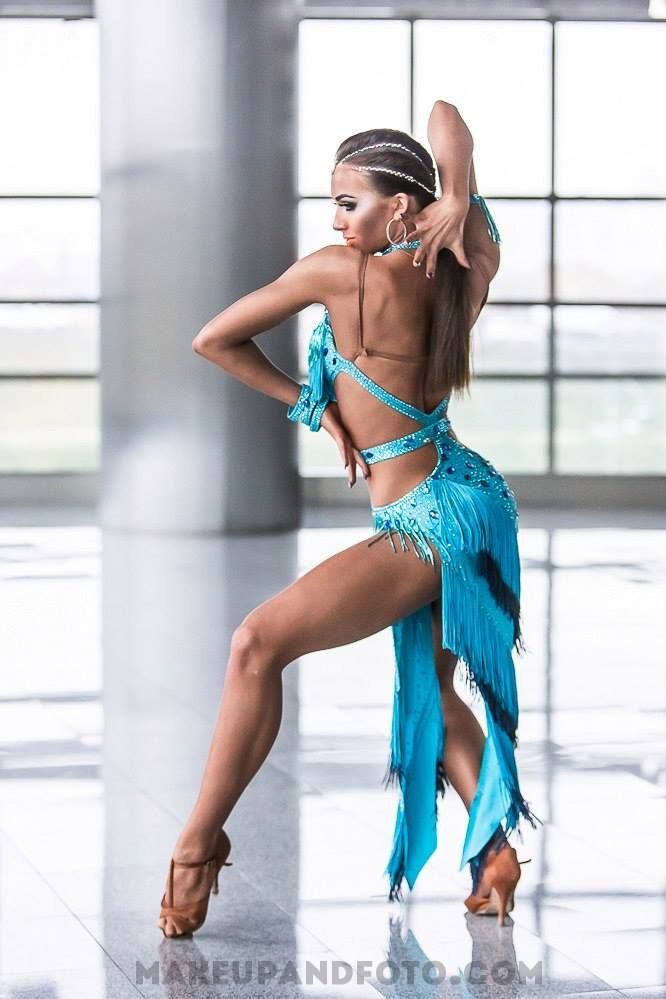 You need to know:
You need to know:
- waist circumference;
- product length.
In addition to the fabric, you will also need a satin ribbon, a wide braid or an elastic band for the belt (the latter option is preferable).
Cutting Start with some simple arithmetic because you need to know the size of the cut. To do this, divide the waist circumference by 6.28 and write down the result. This will be the radius of the notch of the sun skirt. As for another measure, that is, the radius of a large circle, then the length of the product must be added to the result obtained. If you are making a pattern from a piece of wallpaper, you need to cut 4 squares with a side equal to the length of the product, and glue a large square out of them:
- Take the starting point where all four elements meet.
- From this point, draw a circle for the notch.
- From the same center, draw another circle - the bottom edge.
- Cut out the part along the contour and cut out the recess.
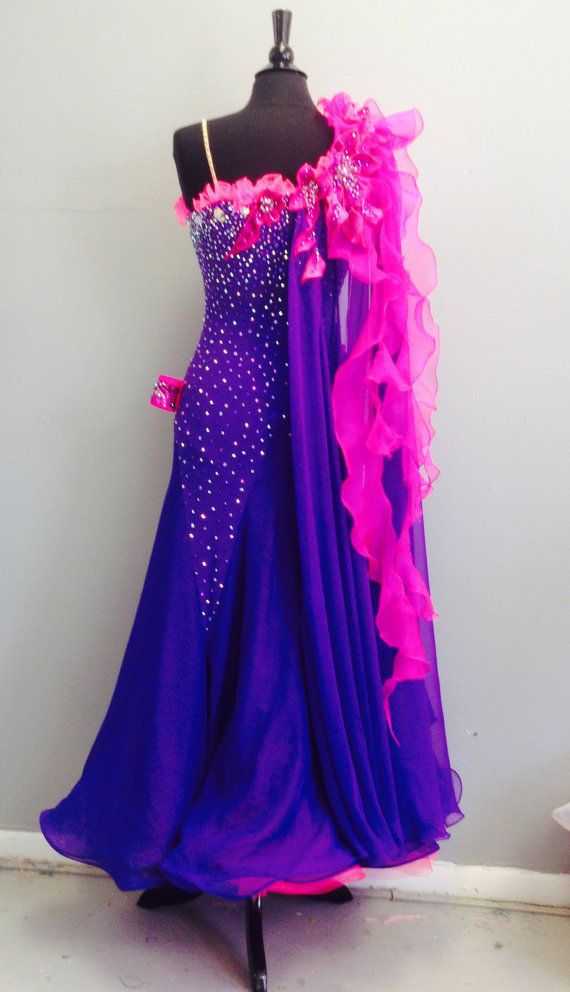
Important! The skirt does not have to be the same length along the entire hem - you can, for example, make it short in front and ponytail in the back. This must be foreseen in the manufacture of paper patterns.
Cutting on fabric
Tulle needs to be folded in several layers - it does not slip and cuts perfectly, so there will be no problems. Each layer will be sized to fit the entire skirt. In this case, it is most convenient not to circle the pattern, but simply pin it and cut it out along the contour.
Assembling the skirt
This process does not take too long:
- Without separating the pieces into layers, sew them along the contour of the notch with a basting stitch.
- Cut a piece of ribbon or a wide elastic band around the waist - the elastic band can be smaller, and besides, in this case it is more convenient to use it.
- Make a ring out of gum.
- Sew it to the top of the skirt so that the notch cut is on the wrong side of the ribbing.
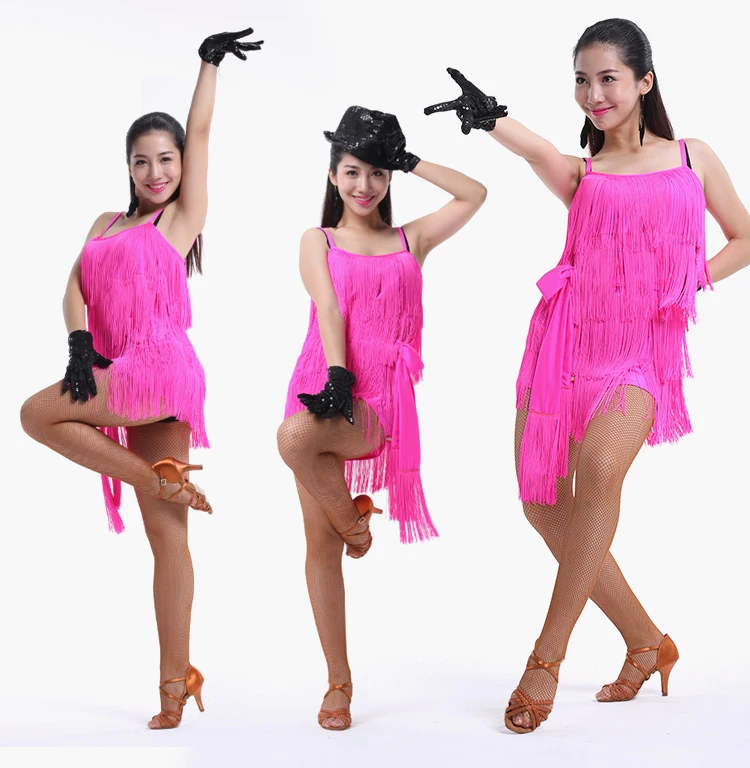
- Baste the skirt to the swimsuit.
- Try on what you have done - few people manage to sew the skirt on the first time, so you have to unpick and tack it several times.
- Once you are satisfied with the result, stitch the elastic to the swimsuit in a zigzag pattern.
Actually, the dress is ready - no need to overcast the tulle. Just make sure that all the details of the swimsuit are tightly sewn. If you used a different material, you will have to hem another bottom.
Important! The elastic for the belt should be the same color as the swimsuit, or the same color as the tulle.
back to contents ↑
What to do next?
And then decorate your ballroom dress as you wish. For example, you can make sleeves for it - wings are best:
- Cut 2 identical strips - the length is 1.5 times the distance between the center of the armholes on the front and back of the swimsuit, and the width is 15-20 cm.

- Sew the strip one long section at a time with a basting stitch, laying gathers.
- Baste it to the armhole of the swimsuit.
- Try it on - see if you like these builds.
- Sew the sleeve to the armhole.
- Trim excess stock.
- Finish the edge - it can be, for example, wavy or beveled to the armpit.
Strengthening the neckline
If the swimsuit is with a fully open back, you need to take measures so that the dress does not slip off when it is not necessary. That is, make several jumpers. To do this, you need an elastic band - best of all the same color as on the belt, but narrower:
- Cut 2-3 pieces.
- Baste them to the neckline on the back so that the elastic is taut.
- Sew on firmly.
Important! It is not necessary to sew jumpers horizontally. You can come up with some kind of composition from them - for example, stitch them crosswise or make something like a mesh.
It all depends on the style of your swimsuit.
to contents ↑